Sister Susie Snap
Sister Susie Snap published by Valentine & Sons Ltd, c.1915.
Sister Susie Snap published by Valentine & Sons Ltd around the time of first world war, c.1915. At least two editions are known.
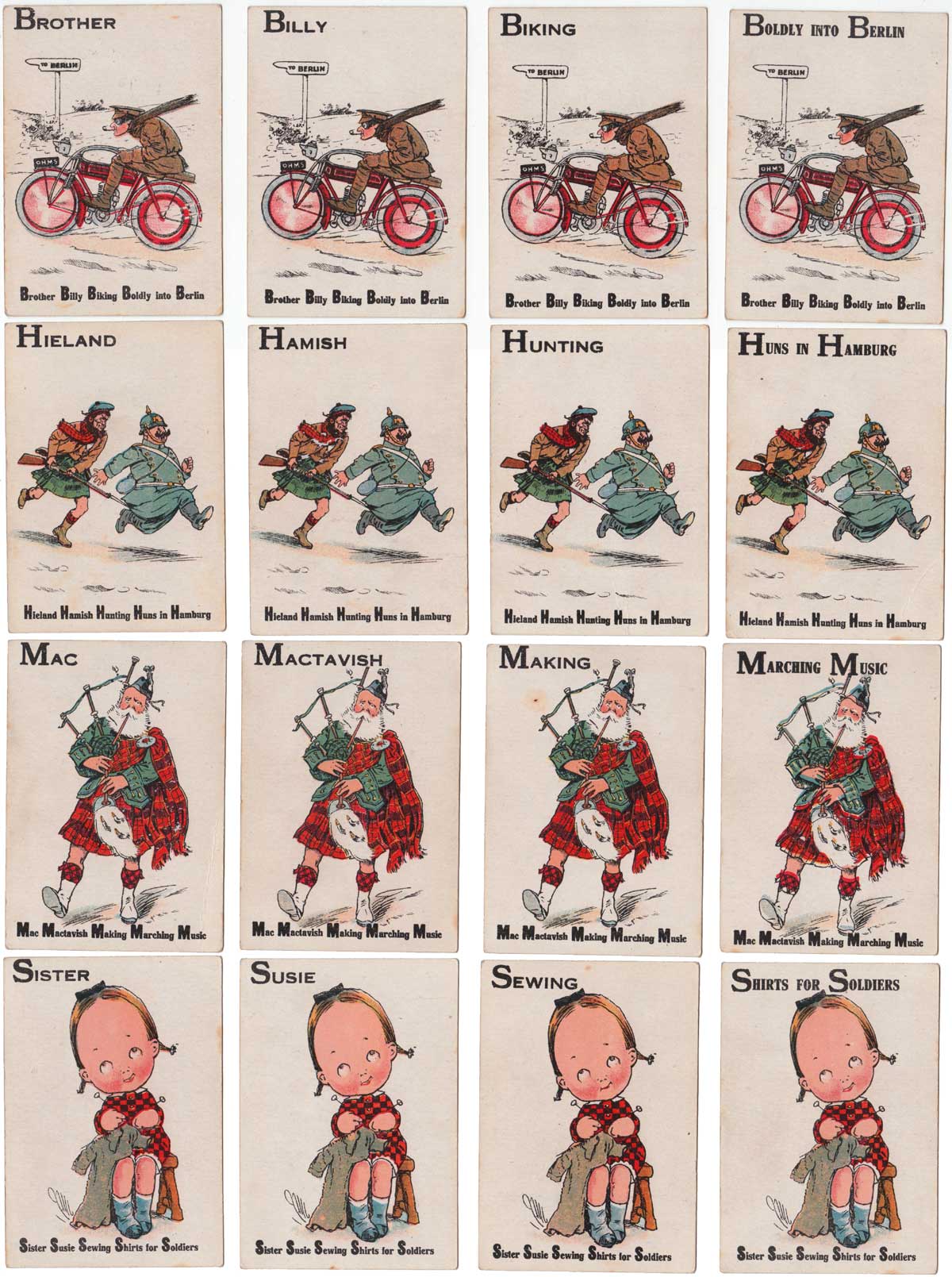
Above: Sister Susie Snap published by Valentine & Sons Ltd, c.1915.
I have 2 packs of this game which must be 1st world war time. Both packs have 32 cards (ie 2 of each card) but there is a different “family” in each (Hieland Hamish in one and Tipperary Tommy in the other). The boxes could each easily contain another 4 cards which would make a complete pack of 36. Bit of a coincidence if both packs are a “family” short though. And if you look at the picture on the boxes there is another card illustrated with a girl with her hand on a soldier’s shoulders. There would not be enough room in the boxes for another 8 cards. Make of it what you will!
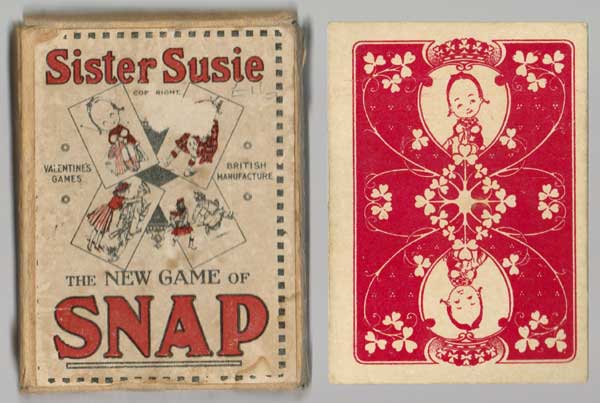
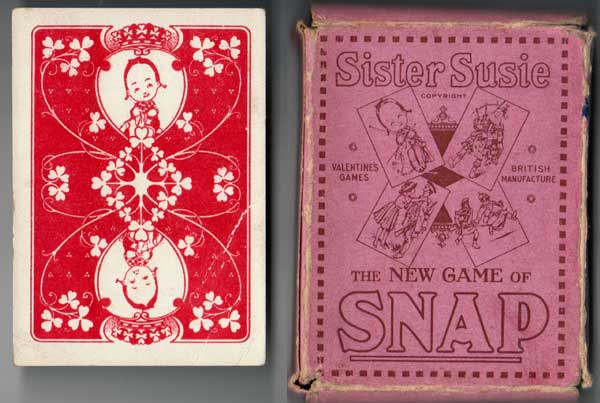
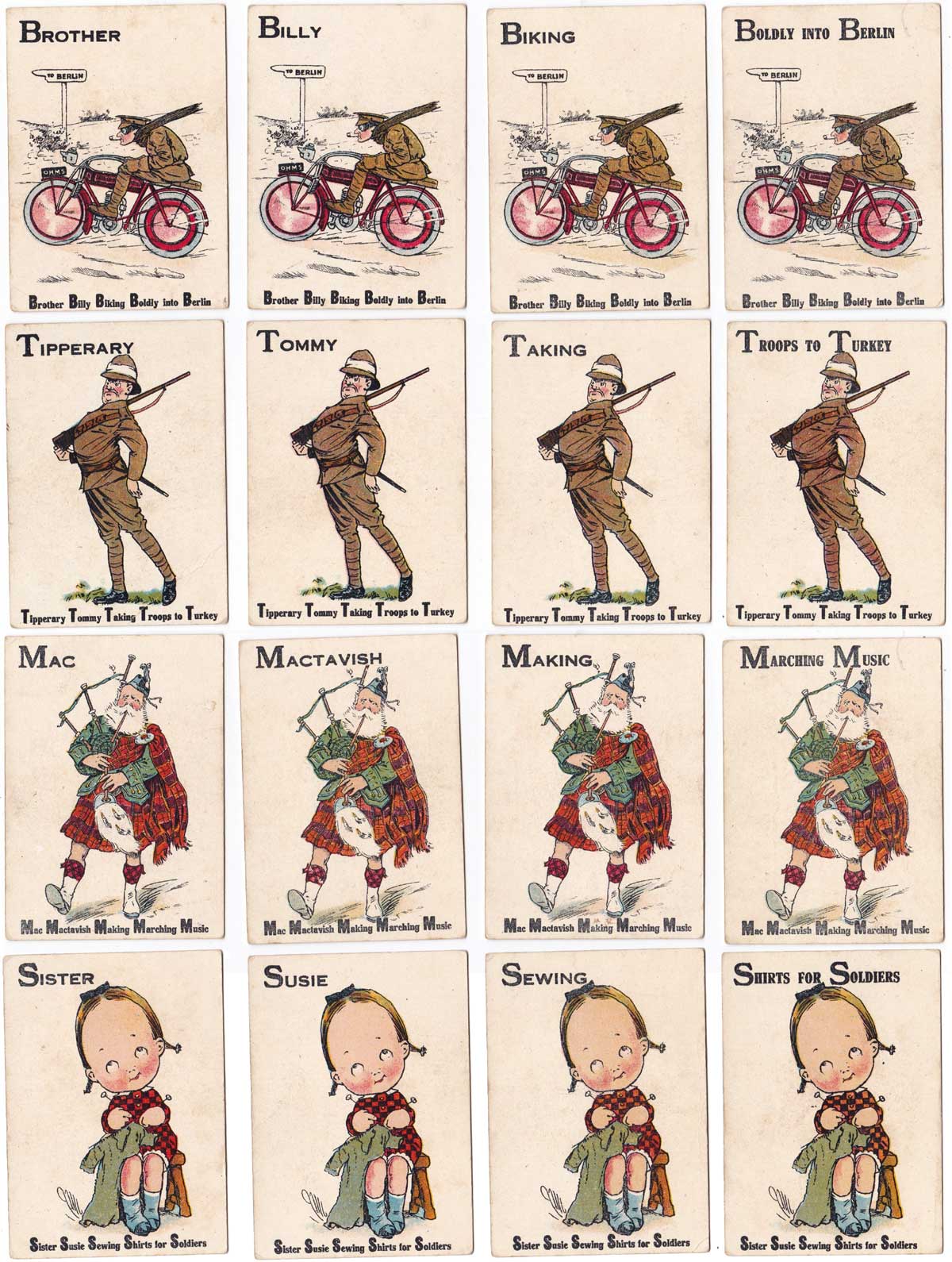
Above: Sister Susie Snap published by Valentine & Sons Ltd, c.1915.
The missing sequence!
Rex’s two packs shown above seem to be incomplete. I have 3 packs of these, one boxed, and they all have all six 'suites', so making 48 cards in each. I must have been lucky with my buying . . .
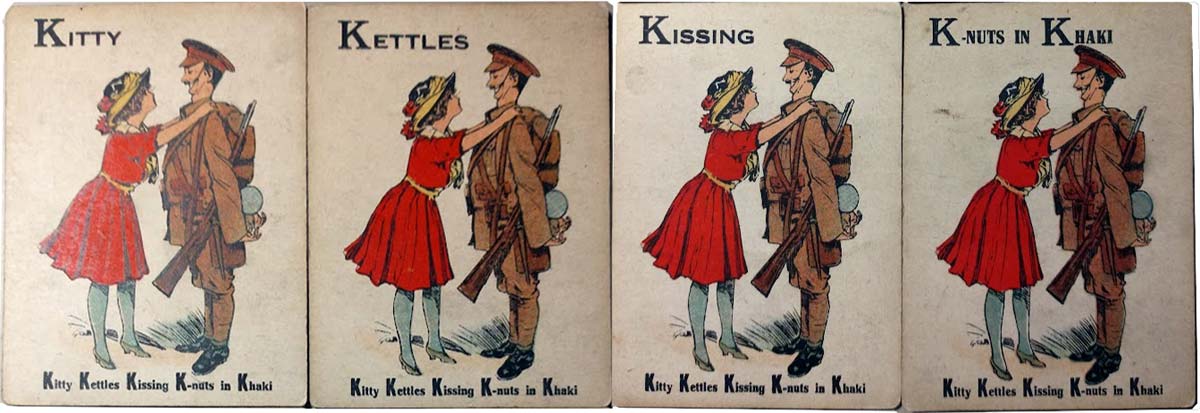
Above: Sister Susie Snap published by Valentine & Sons Ltd, c.1915. Image courtesy John Perry.
By Rex Pitts (1940-2021)
United Kingdom • Member since January 30, 2009
Rex's main interest was in card games, because, he said, they were cheap and easy to get hold of in his early days of collecting. He is well known for his extensive knowledge of Pepys games and his book is on the bookshelves of many.
His other interest was non-standard playing cards. He also had collections of sheet music, music CDs, models of London buses, London Transport timetables and maps and other objects that intrigued him.
Rex had a chequered career at school. He was expelled twice, on one occasion for smoking! Despite this he trained as a radio engineer and worked for the BBC in the World Service.
Later he moved into sales and worked for a firm that made all kinds of packaging, a job he enjoyed until his retirement. He became an expert on boxes and would always investigate those that held his cards. He could always recognize a box made for Pepys, which were the same as those of Alf Cooke’s Universal Playing Card Company, who printed the card games. This interest changed into an ability to make and mend boxes, which he did with great dexterity. He loved this kind of handicraft work.
His dexterity of hand and eye soon led to his making card games of his own design. He spent hours and hours carefully cutting them out and colouring them by hand.

Leave a Reply
Your Name
Just nowRelated Articles
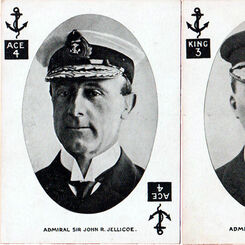
Catch the Kaiser
Card game with non-standard suits, featuring British military leaders from WWI plus the Kaiser.
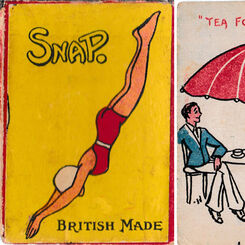
Snap
Anonymous Snap game, 1930s.
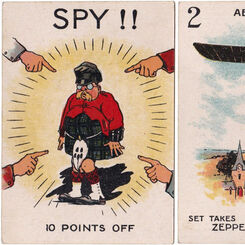
Spy
Spy card game published by Valentine’s Games, c.1915.

C.W.F Snap
C.W.F Snap, c.1902.

Freddy the Fox
Freddy the Fox card game published by Valentine & Sons, Ltd, c.1910.

Valentine’s Games
Valentine & Sons Ltd, Dundee & London, were greeting card and book publishers who also produced play...
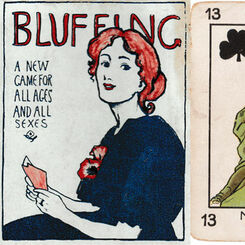
Bluffing
Bluffing published by C.W. Faulkner & Co, c.1896.

Victory Snap
Wartime Snap, a memoir of past times, c.1941.

Siegfried Line
“We’re Gonna Hang Out the Washing on the Siegfried Line” wartime card game made by William Sessions ...
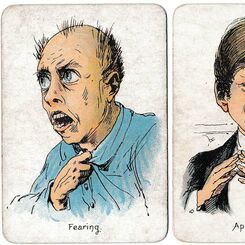
Moods & Faces
“Moods & Faces” round game by Thos de la Rue & Co Ltd,. c.1900.

Wartime Snap
Wartime edition of Snap game by an anonymous publisher.
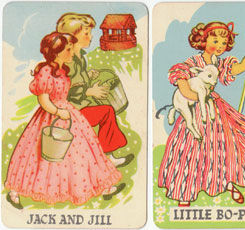
Nursery Rhyme Snap
Chad Valley ‘Nursery Rhyme Snap’ 1950, depicting ten popular nursery rhymes.
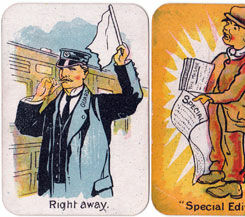
Special Edition Snap 1912
Chad Valley Special Edition ‘Snap’ card game, 1912.
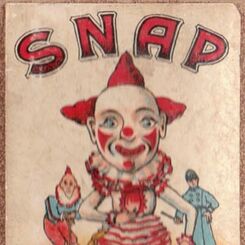
Snap 1930
Chad Valley ‘Pantomime Snap’ card game, 1930.
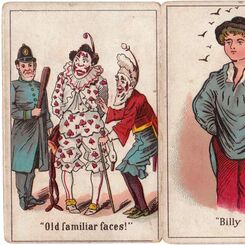
Anonymous Snap game
Anonymous “Snap” game from the late 19th century.

Mr Chad
Anonymous ‘Mr Chad’ card game, 1940s.
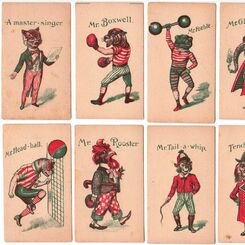
Animal Snap
The full set of this 'Snap' card game is believed to have 9 characters in sets of four, making a tot...
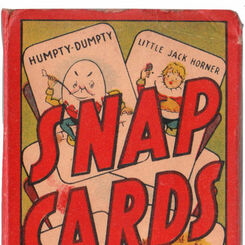
Snap Cards
Clifford Series Snap Cards, c.1950.

The Muddled Menagerie
The Muddled Menagerie card game published by Valentine & Sons Ltd, Dundee & London, c.1900.
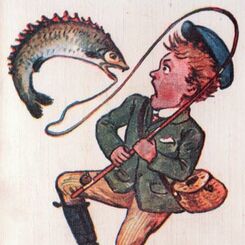
Snap
An anonymous Snap game purporting to be “British Make”, 1930s.
Most Popular
Our top articles from the past 60 days


 Your comment here. Your comment here. Your comment here. Your comment here. Your comment here. Your comment here. Your comment here. Your comment here. Your comment here. Your comment here. Your comment here. Your comment here. Your comment here. Your comment here. Your comment here. Your comment here. Your comment here. Your comment here. Your comment here. Your comment here. Your comment here. Your comment here. Your comment here. Your comment here. Your comment here. Your comment here. Your comment here. Your comment here. Your comment here. Your comment here. Your comment here. Your comment here.
Your comment here. Your comment here. Your comment here. Your comment here. Your comment here. Your comment here. Your comment here. Your comment here. Your comment here. Your comment here. Your comment here. Your comment here. Your comment here. Your comment here. Your comment here. Your comment here. Your comment here. Your comment here. Your comment here. Your comment here. Your comment here. Your comment here. Your comment here. Your comment here. Your comment here. Your comment here. Your comment here. Your comment here. Your comment here. Your comment here. Your comment here. Your comment here.




















